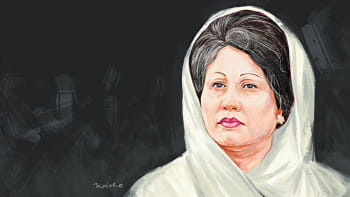Understanding and addressing excessive hair fall among teens

Now a days, one of the common issues teenagers go through is excessive hair fall. Hair fall can be a bit of a concern for teens, especially teenage girls.Normally, a person can lose as many as 100 hairs a day. These hairs grow back from the same origin later on. If the hair fall is greater than that, then it needs to be evaluated.
However, excessive hair loss can happen for various reasons. A specific nutritional deficiency is one of the commonest causes. Teens are sometimes cautious regarding their weight gain and eat a smaller amount of food, sometimes missing a balanced diet. Regular intake of enough protein, vitamins (A, B, especially biotin, C, D, and E), and several minerals (Iron, Zinc) are essential to supporting hair growth. Foods rich in these components are egg yolk, liver, nuts, seeds, bananas, sweet potatoes, mushrooms, broccoli, etc.
Thyroid hormone disorders are also associated with excessive hair loss. This can interfere with hair production and cause hair loss.
Excessive hair fall can be a feature of underlying polycystic ovary syndrome (PCOS). The ovaries produce the hormones oestrogen and progesterone, as well as a minimal amount of the male hormone, androgen. When suffering from PCOS, the ovaries produce an excessive amount of androgens, which results in excessive hair fall.
Certain fungal infections on the scalp may cause hair loss. This may occur from covering damp hair for a longer period of time. The symptoms include hair loss in patches with an itchy or red scalp.
Hair beautification can sometimes be responsible for excessive hair fall if used excessively. Repeated use of chemicals (hair colour, bleach), straightening, or perms can cause damage to the hair, causing it to break off or fall out. The use of too much heat from the iron or hot blow-drying also causes damage to the hair.
Sulphur-containing chemicals are sometimes used in shampoos to have a nice, bubbly lather, but they also strip the oils from the scalp, causing hair to dry out, breaking down the protein essential for hair health, halting growth, and causing hair to break. Sodium chloride is also used in shampoos as a thickener, which can cause a dry, itchy scalp and encourage hair loss.
Another type of hair loss that goes with hair styling is traction alopecia. Wearing a hairstyle that pulls the hair too tightly can permanently damage the hair follicles if it is used for a long time. Pain after doing the hairstyle is a sign of too much traction on the hair. Styling hair while it is wet can also cause it to stretch and break.
Trichotillomania is a psychological disorder in which people repeatedly pull their hair out, often leaving bald patches. People with trichotillomania usually need help from a therapist or other mental health professional before they can stop pulling their hair out.
Sudden stressful events like undergoing surgery, going through a traumatic event, or having a serious illness or high fever can temporarily cause the shedding of large amounts of hair. It is also a reversible condition after solving the stress.
Eating a balanced diet, drying hair naturally, limiting the use of blow dryers at high heat, avoiding too tight hairstyles, being gentle when combing, brushing, or washing hair, not rubbing hair too vigorously, and careful use of chemicals (hair straighteners, hair colour) can be helpful for avoiding excessive hair fall among teens. When used, shampoo and hair gel should be removed properly as their prolonged persistence can clog pores, which in turn restricts the scalp's oxygen supply, leading to increased hair fall.
Dr Abdullahel Amaan is a Paediatrician (E-mail: [email protected]) and Dr Khainoor Zahan is a Public Health Specialist (E-mail: [email protected]).

 For all latest news, follow The Daily Star's Google News channel.
For all latest news, follow The Daily Star's Google News channel. 



Comments